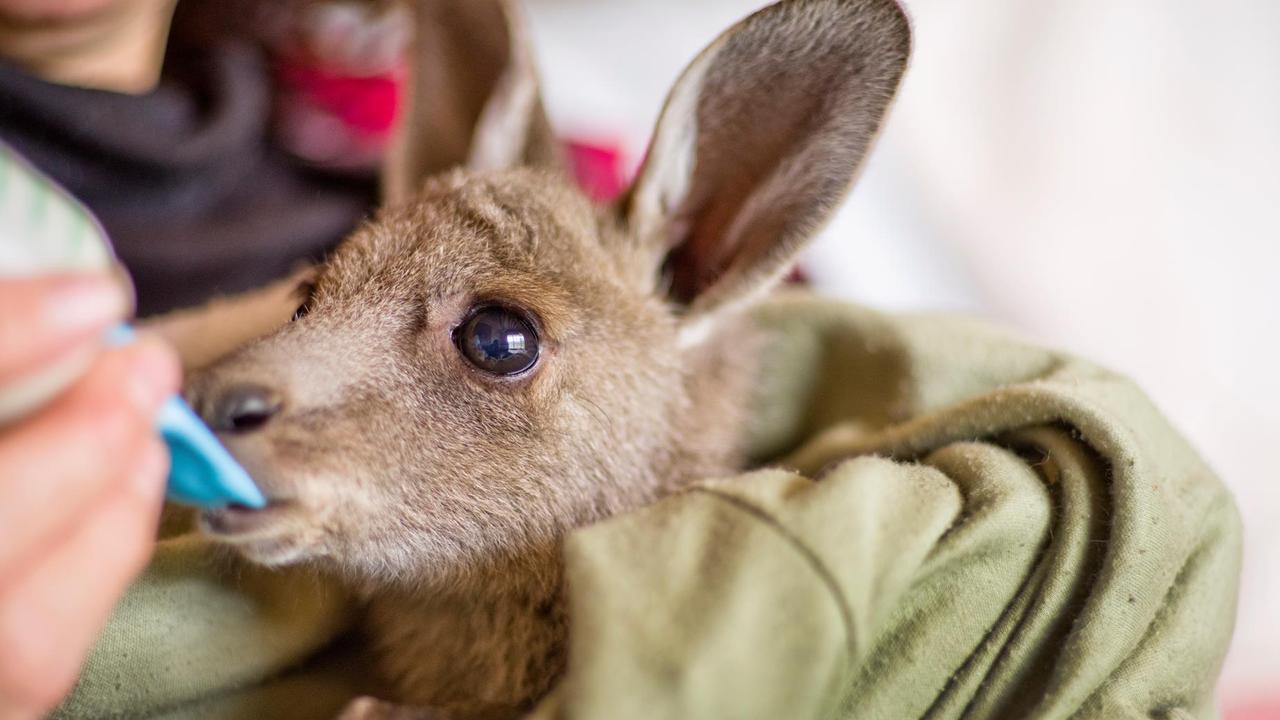Spilling the beans on the benefits of coffee
IT’S the hottest topic in town: coffee and we can’t get enough. But is the beloved beverage good or bad for you? How much is too much? And is decaf just code for drinking warm mud?
VIC News
Don't miss out on the headlines from VIC News. Followed categories will be added to My News.
- Rainbow lattes join Melbourne’s coffee scene
- The average Melbourne coffee order v Sydney
- Melbourne coffee: A history of our latte love affair
FOR my coffee addiction I blame George Clooney; he of the sexy salt ’n’ pepper hair and dreamy brown eyes.
See I used to be a one-coffee-a-day gal. Then George moved in. Well, not George exactly, but one of his coffee machines. And I couldn’t say no.
I was knocking back three a day — before work. One morning on the school run my heart started beating faster than horse hoofs in the Melbourne Cup.
So I quit coffee. No caffeine for eight weeks. What difference did it make? More on that later … But first — is that beloved beverage good or bad for you? How much is too much? And is decaf just code for drinking warm mud?
Coffee is complex; a cornucopia of more than 1000 chemical compounds including antioxidants such as chlorogenic acids and melanoidins, diterpenes and caffeine. It’s this last controversial element that’s caused coffee to be demonised throughout history.
A delightfully quaint article in a 1912 edition of the Salt Lake Tribune damned caffeine
as a “powerful poison”, adding that “much coffee drinking causes ‘nerve storms’ ” and “unsteady nerves are the foe of beauty”.
“Nerve storms” may be a little dramatic, but the state government’s Better Health Channel says excessive amounts of caffeine can cause dizziness and headaches, restlessness and excitability, anxiety and irritability, trembling hands, sleeplessness and the aforementioned rapid heartbeat.
Then there’s the addiction aspect. Some people can become physically dependent on caffeine. Take it away and they can suffer from caffeine withdrawals, with symptoms such as fatigue, headaches and irritability.
So why is it universally adored with some 500 billion cups consumed worldwide every year? Because it tastes so fine, smells divine and the caffeine component stimulates the central nervous system. This means it alleviates fatigue, increases alertness and improves concentration.
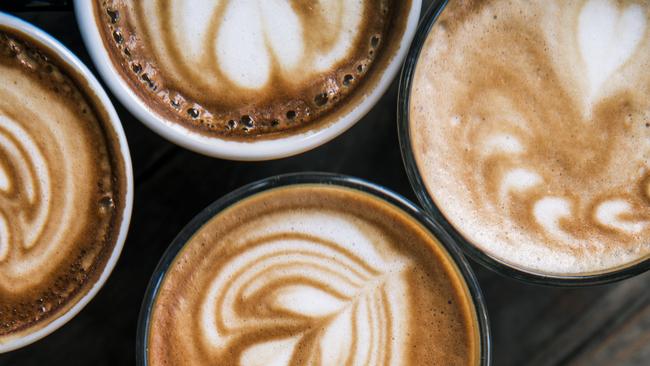
From lungo to piccolo, macchiato to ristretto — is coffee toxic or a tonic?
“I would say coffee, overall, is good for you,” says Dr Alex Hodge, gastroenterologist and liver disease specialist at Monash Health.
Hodge studied 1018 patients with non-alcoholic fatty liver disease, hepatitis C and hepatitis B virus.
“Drinking two or more cups a day is associated with a reduction in what we call ‘liver stiffness’, which is marker for inflammation and scarring — so liver damage essentially. And this is accounting for things like age, gender, medications, alcohol consumption, smoking habits — all those other cofactors,” Hodge says. “We know other coffee compounds like chlorogenic acid can reduce inflammation and we think that diterpenes actually have an antitumorigenic — or anticancer — effect on the liver.”
And it’s not just the liver that can benefit.
“Drinking coffee has also been associated with fewer incidents of neurodegenerative conditions like Parkinson’s disease and Alzheimer’s disease, with a lower risk of developing type 2 diabetes. There’s limited but emerging evidence that coffee is associated with lowering the risk of several cancers including colorectal, liver, ovarian, pancreatic, oesophageal and endometrial. It has all those beneficial associations,” Hodge says.
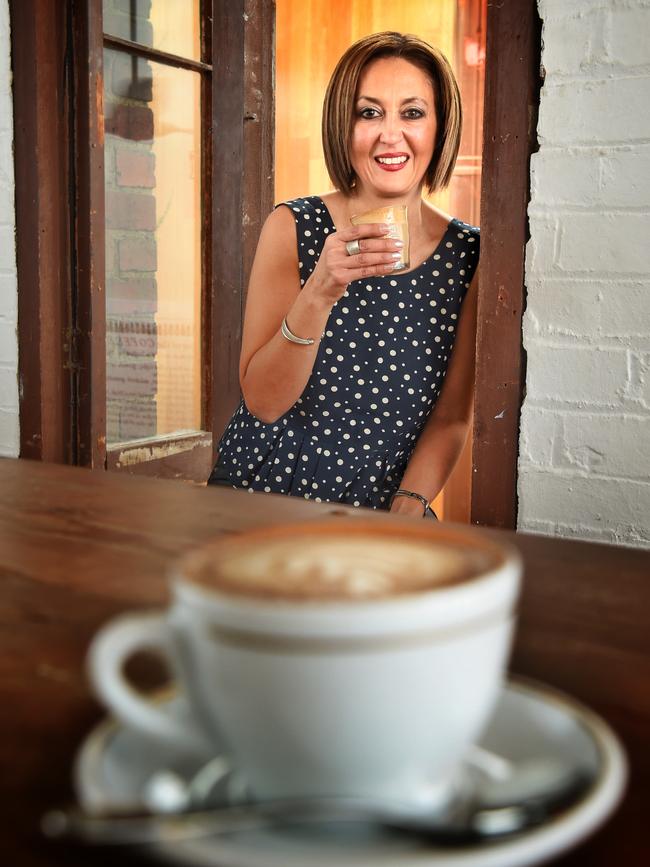
Isn’t it great when medical science backs your guilty pleasure?
“If you look at all the studies, regular use of coffee seems to have a benefit. We do recommend coffee in our clinics. It is not a treatment, but we certainly don’t stop people drinking it,” Hodge says.
Not such a good report card for coffee’s daggy stepsister, tea, though. Hodge’s study didn’t find the same results when he analysed liver patients’ consumption of tea.
“It did nothing. No effect,” he says.
So when it comes to coffee, does this gastroenterologist practise what he preaches?
“Oh, yeah. We have two machines at home. In the morning I make myself a triple espresso with a dash of soy milk. Then at work I maybe have a double ristretto. We’re looking at pure coffee here. Not a cup with three sugars in it, or a litre of milk,” Hodge says.
So we’ve established coffee — in moderation and in its purest form — is good for your health. It’s also a great socialiser. “Let’s catch up for a coffee” is code for let’s meet and have a warm and engaging chat. You don’t say: “Let’s hook up for a milkshake. Or pho. Or some smashed avo.” It’s coffee that brings people together.
In some cases for life.
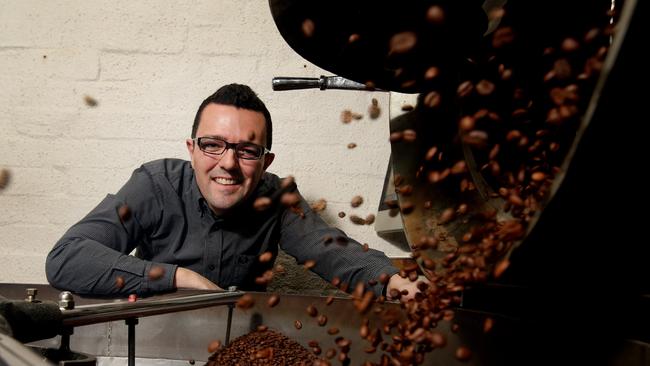
Take coffee mini-mogul Dave Makin. He met wife Zoe Delany when they competed against each other in the 2006 Australian Barista Championships. Baristas have to perform a 15-minute routine where their technical skills and customer service is put to the test. Makin won the competition — and Zoe’s heart. The pair married and started cafe Axil in Hawthorn. Now they own and run five cafes across Melbourne.
Makin also roasts his own coffee and supplies more than 90 cafes with his blend. Tucked behind his Hawthorn establishment is a whirling roasting facility. Makin admits working in the industry meant he was consuming too much caffeine.
“It sneaks up on you a little bit. I was standing behind the machine every day and it’s just that convenience, it’s there, you’re drinking or tasting several cups through the day. Before you know it, you’re up around the eight or nine cups without even realising it,” Makin says.
Did it have an effect on him?
“I got a lot done,” he laughs.
Jesting aside, when Makin travels the world tasting coffees, he takes a sip from up to 100 cups a day.
“Sure we slurp it and spit it out, like in wine tasting, but obviously you’re still taking in so much caffeine just by the process alone.”
Someone else who knows all about consuming huge quantities of caffeine in the line of duty is coffee queen Maria Paoli, the woman behind The Historical Coffee Trek tours of Melbourne. As an esteemed judge of coffee competitions, she was often subjected to eight hours of continual coffee tasting; that amounted to a staggering 1000 sips a day.
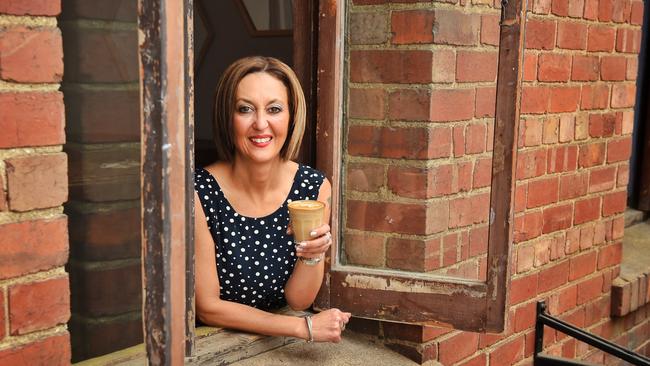
“After one competition I actually threw up. Drinking that amount of caffeine compromised my immune system so badly I got some form of glandular fever. So I cut myself off from everything, took myself away from judging and went cold turkey,” she says.
Both Makin and Paoli have reduced their daily intake to three cups a day.
“The max a person should be having is three cups a day before 2pm. And it’s important that each of those coffee shots contains no more than 120mg of caffeine. Consumers obsessed with upsizing mean baristas have got into the bad habit of pouring 180 to 200mg of caffeine into one coffee. An espresso should be no more than 120,” Paoli says.
Makin adds: “Everything in moderation. Don’t drink too much. Don’t go cold turkey. Just make sure what you are drinking is good quality.”
There are no set guidelines on how much is too much because caffeine affects individuals in different ways. Coffee beans come in different strengths depending on the variety. Robusta coffee beans, for example, contain more caffeine than Arabica. A lot also depends on how the beans are roasted and how the coffee is extracted.
But as a general rule, according to the Better Health Channel, the safe limit for healthy adults is up to 400mg of caffeine a day. That’s about four to five standard single espresso shots.
It’s also known that caffeine at doses greater than 95mg can increase anxiety levels in children. Most kids are not coffee connoisseurs but many are tempted by energy drinks — often packed with caffeine and sugar. Fortunately the Food Standards Code restricts how much caffeine can be added to energy drinks — the maximum amount they can contain is 320mg per litre.
What about recommendations for pregnant women? Some studies suggest a relationship between caffeine and reduced birth weight and preterm birth in babies. Consequently, it’s suggested pregnant women limit their intake to less than 200mg a day if at all.
“Baristas are the first people to know if a woman’s pregnant because the women suddenly switch from a strong latte to a decaf — so that’s clear sign something’s going on,” Makin says.
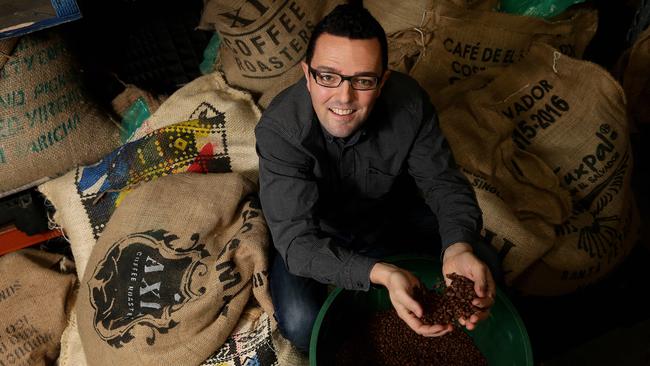
Dear old decaf. Let’s clear up a few myths about coffee’s poorer cousin. First, decaf no longer tastes like dishwater; new methods now preserve the distinct and delicious flavour of coffee beans. Second, not all the health goodies are locked in the caffeine. Many antioxidant benefits are contained within the coffee regardless of whether there’s caffeine present or not. Finally — and here’s the big one — not all decaf is created equal.
There are two methods of stripping caffeine from un-roasted coffee beans. One is solvent based and uses chemicals.
“Methylene chloride is the solvent used in these decaffeination methods — it’s basically paint stripper. It’s really toxic,” Paoli says.
The other non-solvent based technique is the Swiss Water Process, which uses water instead of chemicals to remove caffeine.
“This is far better for you,” says Paoli. “The only problem is the cost to produce this type of decaf is higher. As only 1-2 per cent of coffee orders in Australia are for decaf, many cafes don’t use Swiss Water.”
So, what makes the perfect coffee?
“That’s like saying what makes the perfect relationship?” Makin says.
“It’s actually millions of tiny intangibles that all come together to make the cup of coffee. It is not particularly the farmer, the roaster, the barista. It’s a combination of all of the people along the process who make sure your coffee is great tasting every morning.”
Which brings me back to my not-so-perfect relationship with George. I felt terrible when we broke up. I had headaches for three days, I was grumpy, I dropped a kilo, I missed the ritual of our relationship. Then a funny thing happened. Time healed my broken heart. After two weeks I started feeling better. Brighter, even.
For me, George is better in small doses. One cup a day is enough. Make mine a “magic”*.
* So hot right now, and invented in Melbourne. It’s a double ristretto in a 170g cup so it has a higher coffee to milk ratio. Kind of like a three-quarter flat white. Order one now before it’s so cool it becomes uncool.


